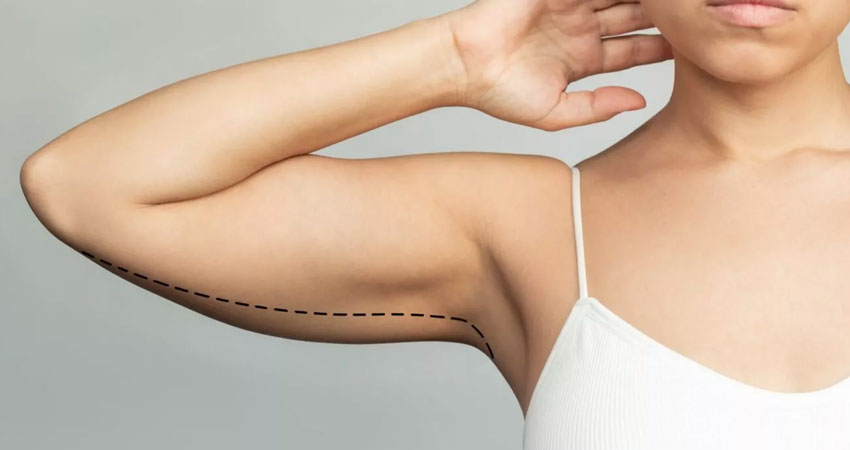
Brachioplasty (Arm Reshaping)
Age and large weight loss can unfortunately lead to sagging tissue which shows as a bag of flesh on the lower side of the upper arm commonly known as Bat Wings. A minor sagging with good skin tone can be corrected with liposuction whereas significant sagging will need a brachioplasty operation. This will depend upon your skin type and the extent of skin redundancy. It will be decided at your consultation with the doctor.
A Brachioplasty or upper arm lift, is an operation performed to improve the shape and contour of your arm from armpit to elbow. The operation can remove excess skin, unwanted scars, stretch marks and fat. There are a variety of different brachioplasty procedures and depending on your particular problem(s), the operation will be individualised and tailored to suit you.
The Operation
Brachioplasty is usually performed under general anaesthesia and the procedure lasts for about 2 hours , it usually requires an overnight hospitalization. A wedge or ellipse of skin and fat is excised from the posterior inner arm leaving a scar that can run from axilla to elbow. The scar can sometimes be shorter if you need a mild lift only. It can also be longer and incorporate the removal of lateral chest fullness – e.g. in massive weight loss patients. In addition liposuction can be performed to the arm, which helps to remove additional fat.
Risks And Limitations
Like any surgery there is a chance of bleeding during surgery. Post op infection can be controlled by a course of antibiotics but may prolong recovery. Operated area may have some numbness after surgery. Mild asymmetry on both sides is a possibility but can be tackled by touch up procedures. Generally most of the patients undergoing this procedure are happy provided they have realistic expectations from surgery.
After The Operation
Depending on the individual patient recovery time will vary. Bruising and swelling are to be expected as well as a tight feeling in the arms. It is also recommended to you wear a compression support garment for few weeks to reduce swelling and will need to take antibiotics to prevent infection. Most of the swelling will disappear after 3 weeks. You should avoid strenuous activity for 1 month. Most patients are able to go back to work 2 to 3 weeks after surgery.
 WhatsApp
WhatsApp